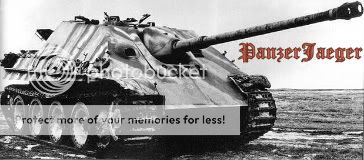As a continuation of the Case White thread, I thought I would recognize the anniversary of Operation Market Garden, the failed Allied effort to outflank the Siegfried Line and invade industrial Northern Germany through the Netherlands that began today in 1944.
Market, the largest airborne operation in history, was designed to seize critical bridges over the Maas and Rhine Rivers. It involved some of the most famous Allied units of the war, including the American 101st and 82nd Airborne Divisions and the British 1st Airborne Division. Garden, a heavily armored ground force, was to break through German lines and travel Highway 69, what became known as ‘Hell’s Highway’, to relieve the paratroopers.
In the face of this onslaught sat two vastly under strength SS divisions, several ad-hoc Wehrmacht formations, and the brilliant tactical mind of one of my favorite military commanders: Walter Model.
Through poor Allied leadership and quick German reactions, Garden was stopped before it could reach its last objective – fiercely held by the British 1st – the bridge at Arnhem. The British paratroopers were soon encircled and destroyed, with the survivors being evacuated across the Rhine in Operation Berlin.
While the operation was to be a demonstration of how far Allied forces had come (co-opting what was once a German specialty on a massive scale), it actually highlighted their limitations. While such an operation required quick, decisive action, Allied command and control was plodding at best. In contrast, Market Garden is a great example of late-war German Kampfgruppe tactics. Under Model’s watch, ad-hoc German units from the Wehrmacht, SS, and Fallschirmjäger were created, combined, and broken up in quick succession according to battlefield assessments and leaders were chosen based on skill, all without regard for the traditional branch competitiveness and hierarchies that accompanied most military bureaucracies of the time. This allowed the Germans to overcome material disadvantages and react quicker and more potently to Allied moves.
Apart from the German leadership and tactics, blame for the failure of the operation has been argued over for decades. Many point to supposed leadership inadequacies in the British officer class, from Monty down to Frederick Browning, the airborne operational commander, who used 38 critical transports to move his entire corps headquarters into Nijmegen on the first day of the operation – only to remain completely out of contact with the troops under his command for most of the operation. General Gavin, commander of the 82nd, stated in his diary that he "...unquestionably lacks the standing, influence and judgment that comes from a proper troop experience....his staff was superficial...Why the British units fumble along...becomes more and more apparent. Their tops lack the know how, never do they get down into the dirt and learn the hard way." The British, in turn, blamed the whole thing on the Polish, which created an acrimonious environment to say the least.
Others have blamed the plan itself. They argue that the paratroops should have been landed right on or much closer to the bridges, so as not to have to launch painful attacks against an enemy that had time to prepare defenses. ‘Groupthink’ has also been blamed, as Allied intelligence uncovered tanks and other heavy equipment that would certainly become a problem for lightly armed paratroops, but ignored their findings as the plan had already been approved and was in the works.
In any event, Operation Market Garden was an ambitious plan that, despite the best efforts of Allied and German leadership, almost succeeded based on the bravery and fighting prowess of Allied Airborne forces. Both sides fought with a level of tenacity that befitted their unit’s reputations. This chapter in WW2 history should not be forgotten.





























































Bookmarks